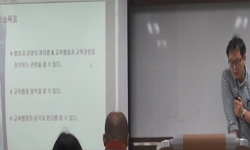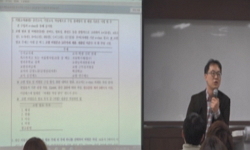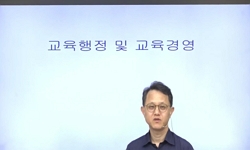The major purpose of the study is to analyze the Constitutional Court of Korea cases on the legal theory of the principle of definiteness in education law critically. The major findings are as follows. First, the court related this princip...
http://chineseinput.net/에서 pinyin(병음)방식으로 중국어를 변환할 수 있습니다.
변환된 중국어를 복사하여 사용하시면 됩니다.
- 中文 을 입력하시려면 zhongwen을 입력하시고 space를누르시면됩니다.
- 北京 을 입력하시려면 beijing을 입력하시고 space를 누르시면 됩니다.
https://www.riss.kr/link?id=A76461767
- 저자
- 발행기관
- 학술지명
- 권호사항
-
발행연도
2007
-
작성언어
-
- 주제어
-
KDC
360
-
등재정보
KCI등재
-
자료형태
학술저널
-
수록면
449-485(37쪽)
- 제공처
-
0
상세조회 -
0
다운로드
부가정보
다국어 초록 (Multilingual Abstract)

The major purpose of the study is to analyze the Constitutional Court of Korea cases on the legal theory of the principle of definiteness in education law critically. The major findings are as follows. First, the court related this principle to the Equal Protection Clause, the over-restriction principle, and the principle of non-infringement of the essential content of fundamental rights. However this relationship is inappropriate because they are different in their nature and meanings.<BR> Second, the court suggested the different subject of the judgement for definiteness by the area of its application. For example, the reasonable person in the case of the restriction of fundamental rights, the law enforcer when free speech is restricted, the sound judge and the reasonable person in the case of the principle of nulla crimen, and the people and the administrative body in the case of the delegated order. However, the reasonable person standard has a weakness since not this person but the Justice judges definiteness from the reasonable person"s viewpoint. Next, the law enforcer and the sound judge are not consistent with the purpose of requiring definiteness in the case of the restriction of free speech and the principles of nulla crimen. Finally, it is desirable that in the case of the elementary school students the parent judges definiteness considering their linguistic development.<BR> Third, the court approached to the reasonable person in terms of the ability of judgement, common sense, legal emotion, and the intelligence. This approach has some weaknesses. First, what they are and who should judge them are unclear. Also, they need the normative proving. Next, by distinguishing the have"s and the have-not"s this approach can oppress the possibility of the latter"s, in particular the teacher"s, litigation on the basis of the principle of definiteness. Finally, the meaning and the court"s interpretation of the law is not necessarily consistent with the legal emotion.<BR> Fourth, the court used the less restrictive standard in the case of the law with ever-changing and various facts, the collection of the less sensitive information, deregulation, and the delegated order while the more strict standard in the case of the restriction of free speech, the principle of nulla crimen, and the burdensome law. However this usage has two weak points. First, in the case of the delegated order it is necessary to use different standard by what is regulated. Further, which standard should be used is unclear in the case of the burdensome law with ever-changing and diverse facts. Finally, it is desirable to use the less restrictive standard in the case of delegation to the school regulation and rule.<BR> Last, the court usually used vagueness and overbreadth as the criteria for judging definiteness in the case of the restriction of the fundamental rights and free speech and the principle of nulla crimen. However the court did not distinguish between vagueness and overbreadth and factually make the requirements for definiteness loose through the judges"s compensatory interpretation and the constitution-consistent one. Also, the court used foreseeability and intelligibility as the criterion for judging definiteness in the case of the delegated order. However, the former is not appropriate as this criteria because this order is the problem of power distribution between the legislative and the executive. Also, there is a possibility that the judge"s compensatory interpretation does not reflect the unique logic of education.
동일학술지(권/호) 다른 논문
-
- 한국헌법학회
- 오호택(O Hotaek)
- 2007
- KCI등재
-
프랑스의 국민투표법률을 통한 헌법개정― 1962년 11월 6일 국민투표에 의한 법률(Loi référendaire)에 관한 결정을 중심으로
- 한국헌법학회
- 전학선(JEON Hak-Seon)
- 2007
- KCI등재
-
대학의 자치와 국립대학 법인화 - 『국립대학법인의 설립ㆍ운영에 관한 특별법』(안)을 중심으로
- 한국헌법학회
- 김배원(Kim Bae-Won)
- 2007
- KCI등재
-
인간의 존엄과 가치, 그리고 胚芽 - 생명윤리및안전에관한법률 제1장을 중심으로
- 한국헌법학회
- 박선영(PARK Sun-Young)
- 2007
- KCI등재





 스콜라
스콜라






